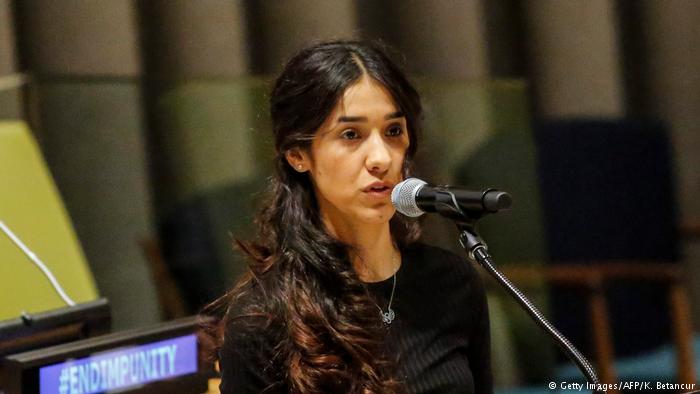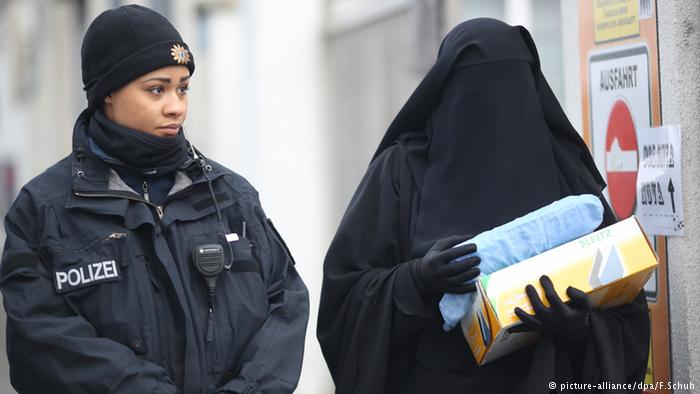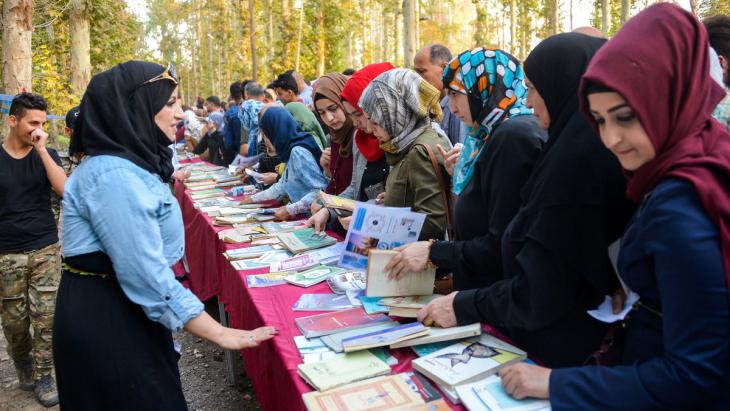After surviving IS, Yazidi women ask to go home
 Among thousands fleeing the crumbling dream of an Islamic State group “caliphate” in eastern Syria are alleged jihadists but also survivors of some of their worst atrocities.
Among thousands fleeing the crumbling dream of an Islamic State group “caliphate” in eastern Syria are alleged jihadists but also survivors of some of their worst atrocities.
“I’ll never forget,” 40-year-old Bissa says softly, as she recounts being “bought and sold” by six different jihadists.
“We did everything they wanted to do with us. We couldn’t say no,” says the Iraqi woman from the Yazidi religious minority, after fleeing her IS captors.
Bissa was one of at least seven Yazidi women and girls to finally escape captivity last week, after years as “sex slaves” at the hands of the extremist group.
Speaking to AFP in territory held by US-backed forces, the women — and at least one teenager abducted when she was 13 — say they just want to go home.
“They would sleep with us against our will,” Bissa tells AFP, wearing a dark red headscarf and appearing years beyond her age, her face and hands etched with lines.
More than 36,000 people have fled a crumbling IS holdout near the Iraqi border in recent weeks, among them 3,200 alleged jihadists.
But now in territory held by the US-backed Syrian Democratic Forces (SDF), none perhaps have tales so harrowing as the Yazidi women.
In 2014, IS jihadists rampaged across swathes of Syria and neighbouring Iraq — including the northern Iraqi region of Sinjar, home to a large Yazidi community.

An Iraqi Yazidi woman, who fled her home when Islamic State (IS) militants attacked the town of Sinjar, looks at her baby as they rest inside a building under construction where they found refuge on the outskirts of the Kurdish city of Dohuk, in Iraq’s autonomous Kurdistan region, on August 16, 2014.
The Kurdish-speaking Yazidis follow an ancient religion rooted in Zoroastrianism, but IS considers them to be “apostates”.
In Sinjar, IS fighters killed the men, forcefully enlisted boys as soldiers and kidnapped more than 6,000 women.
After Bissa was captured, she was “bought and sold” by six different jihadists — including three Saudis and a fighter who said he was Swedish.
She was repeatedly brutalised, but was too scared to escape.
“They said whoever tried… would be punished by a different man sleeping with her every day,” she says inside an SDF centre near the Omar oil field.
But 17-year-old Nadine, who jihadists kidnapped from Sinjar when she was just 13, says she twice tried to escape.
Both times the jihadist group’s police caught her.
“They flogged me with a hose. It left marks on my back, and I couldn’t sleep on it,” she says.
“The second time, they said I couldn’t eat for two days,” she added.
After they abducted Nadine, IS jihadists took her across the border to the group’s then de facto Syrian capital of Raqa.
Over four years, she says, six different men bought her — Saudis and a Tunisian.
She had to adapt to their brutal interpretation of religion, and adhere to their strict dress code of covering from head to toe in public.
“I love colour, and I used to wear trousers,” Nadine tells AFP.
Inside the SDF centre, she wears a black-and-white bead bracelet around her wrist, bearing the name of her little brother in English.
But she can’t bring herself to remove her black face veil.
“I got used to it. I can’t yet take it off,” she says. “But I will do so when I see my mum.”
After escaping, Nadine says several cousins are still being held in an IS pocket in eastern Syria.
At the height of its rule, IS controlled territory the size of Britain, but today it has lost all but the eastern patch to various offensives — including by the SDF, backed by air strikes of the US-led coalition.
Between 2015 and 2018, at least 129 Yazidi women and girls were handed over to the Kurdish Women’s Protection Units (YPJ), who are part of the SDF.
“We’re definitely… fighting IS to free more captives — and not just Yazidis,” YPJ spokeswoman Nasreen Abdallah told AFP.

Yazidi human rights activist Nadia Murad speaks as she attends ‘The Fight against Impunity for Atrocities: Bringing Da’esh to Justice’ at the United Nations Headaquarters on March 9, 2017 in New York.
At the YPJ centre, Sabha, 30, waited with to take her 10-year-old daughter to hospital, after a kettle of boiling water fell on her legs.
Also a Yazidi woman, Sabha fled the last patch of IS territory with her six children, after the man she was forced to marry was killed in an air strike.
Five of her children are from a first husband killed by IS after they overran Sinjar.
But her 18-month-old girl was fathered by a Kurdish jihadist from the Iraqi region of Kirkuk, who said he spent 15 years of his life in Britain.
Sebha says the jihadist beat her and threatened to kill her children if she disobeyed.
“All I could think of was how to get out,” says Sabha, wearing a green headscarf.
“I’d wish him dead so I could escape.”
Today, Sabha looks forward to going home to her family, she says.
“But what makes me most happy is that I saved my children.”
Source: AFP







